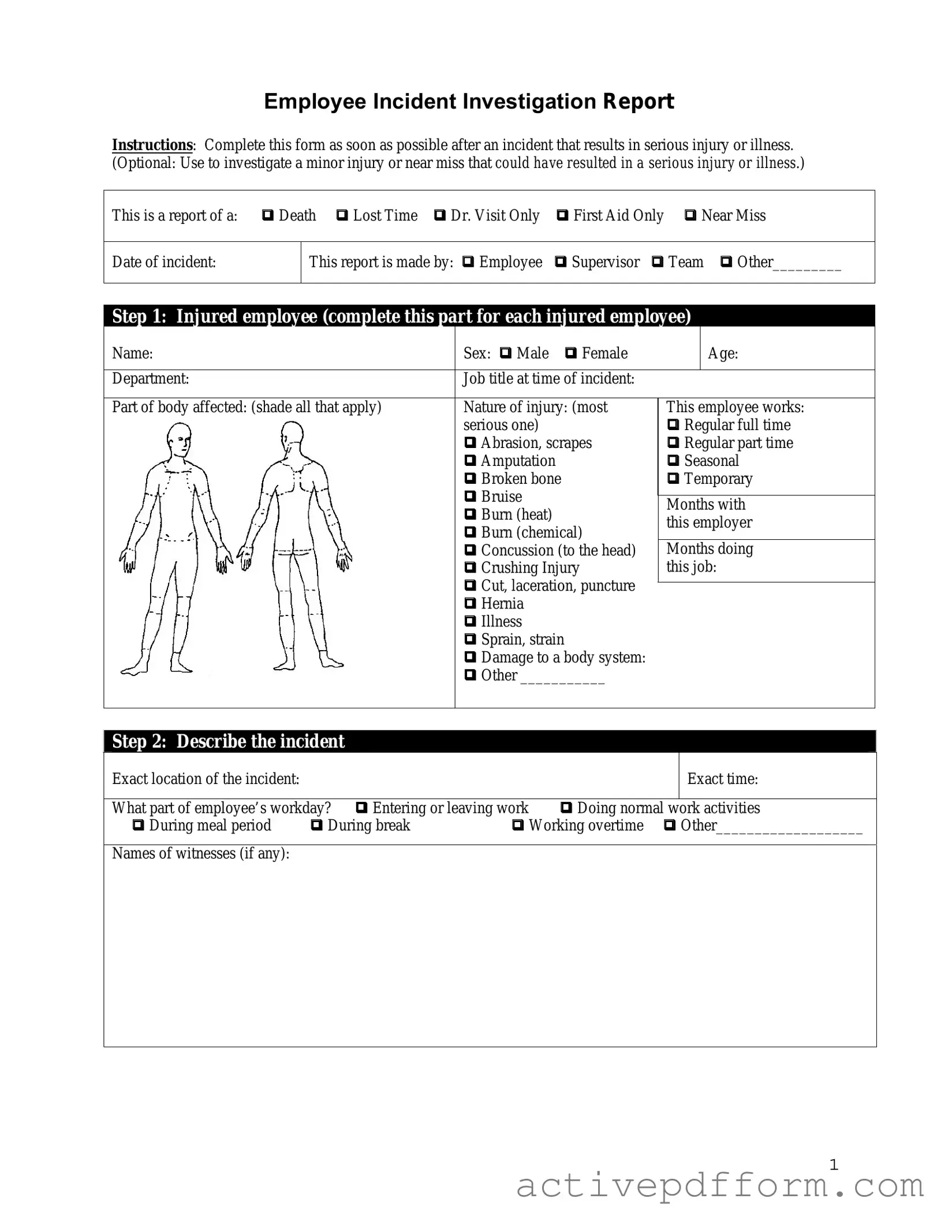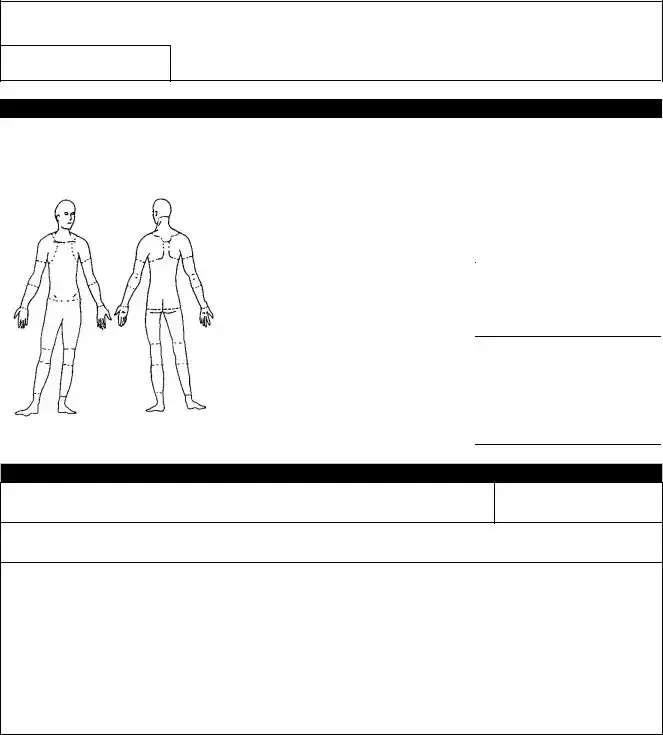What is the purpose of the Employee Accident Report form?
The Employee Accident Report form is designed to document any workplace accidents or injuries that occur. This form helps ensure that all incidents are recorded accurately, which is essential for assessing safety protocols, addressing employee needs, and fulfilling legal obligations. By completing this report, you contribute to a safer work environment for everyone.
Who should fill out the Employee Accident Report form?
The form should be filled out by the employee who experienced the accident or injury. If the employee is unable to complete the form due to their condition, a supervisor or another witness may fill it out on their behalf. It’s important that the report is completed as soon as possible after the incident to capture accurate details.
What information is required on the form?
The form typically requires basic information such as the employee’s name, date of the incident, location, and a description of what happened. It may also ask for details about any witnesses and the nature of the injury. Providing thorough and accurate information helps in the investigation and follow-up processes.
What happens after I submit the form?
Once you submit the Employee Accident Report form, it will be reviewed by your supervisor or the designated safety officer. They will investigate the incident and determine if any further action is needed, such as medical attention for the injured employee or changes to safety procedures. You may also be contacted for additional information.
Is there a deadline for submitting the Employee Accident Report form?



